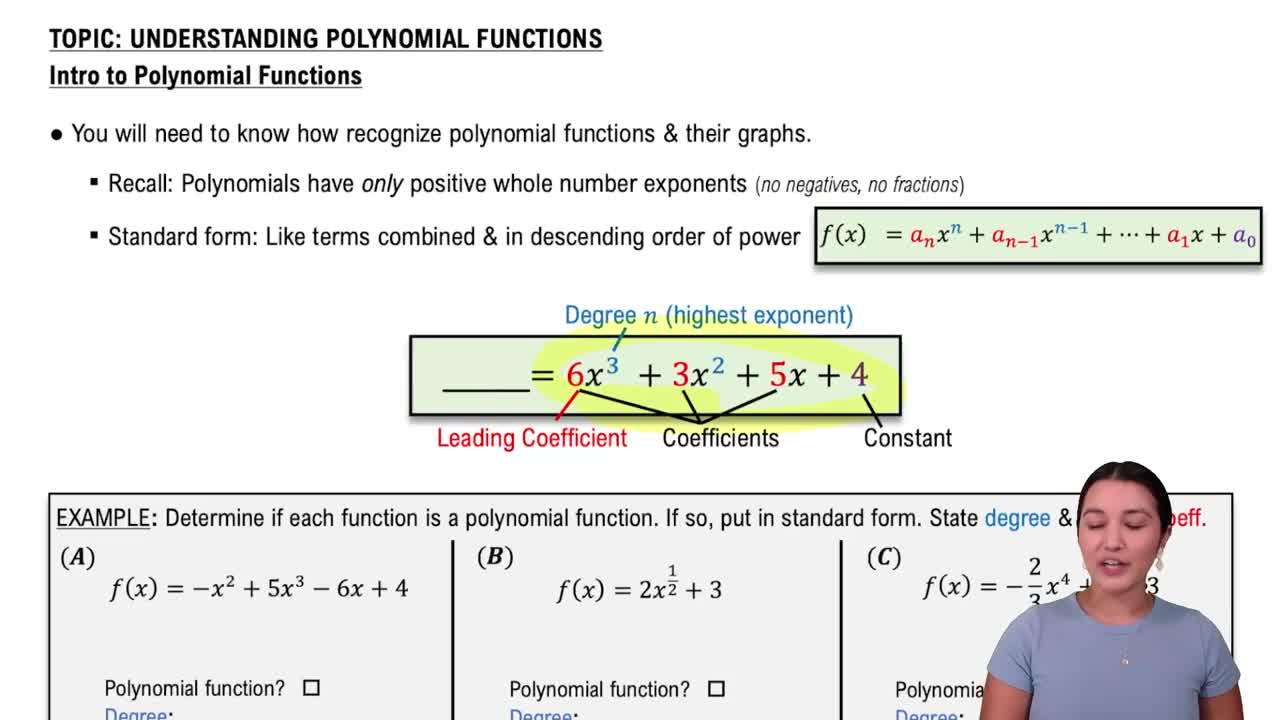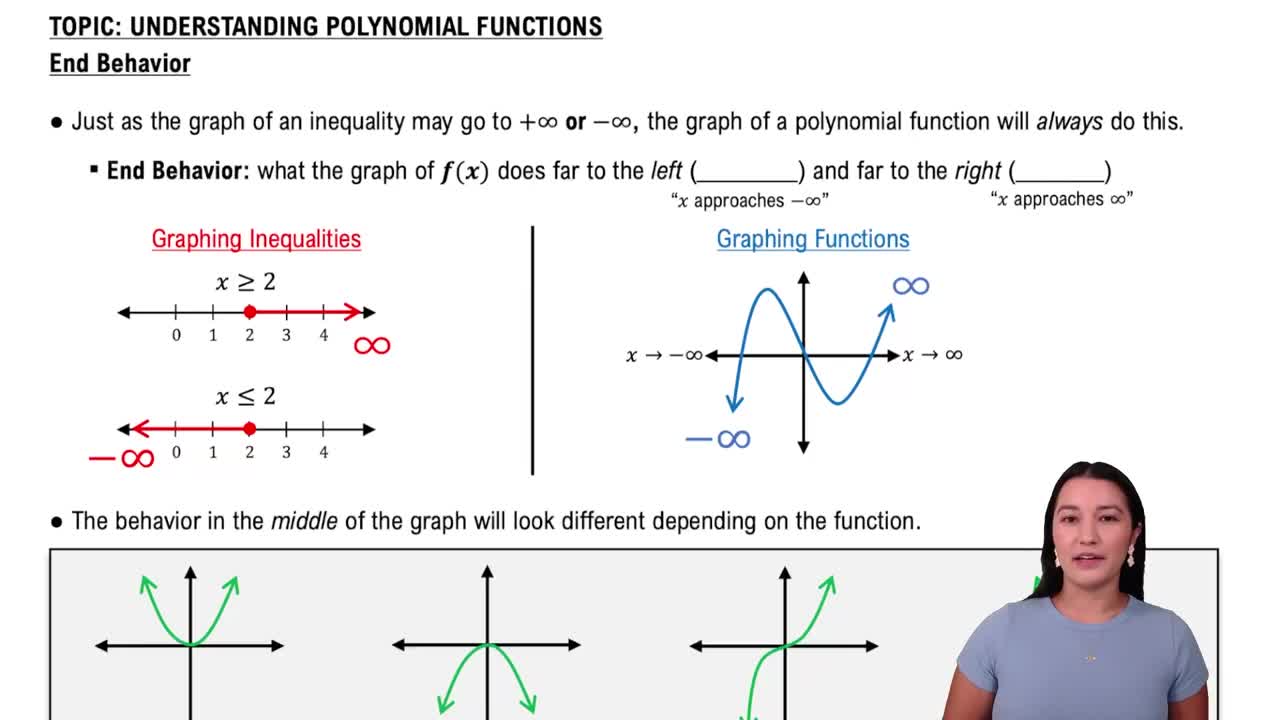Table of contents
- 0. Review of Algebra4h 16m
- 1. Equations & Inequalities3h 18m
- 2. Graphs of Equations43m
- 3. Functions2h 17m
- 4. Polynomial Functions1h 44m
- 5. Rational Functions1h 23m
- 6. Exponential & Logarithmic Functions2h 28m
- 7. Systems of Equations & Matrices4h 6m
- 8. Conic Sections2h 23m
- 9. Sequences, Series, & Induction1h 19m
- 10. Combinatorics & Probability1h 45m
4. Polynomial Functions
Understanding Polynomial Functions
Problem 10a
Textbook Question
In Exercises 1–10, determine which functions are polynomial functions. For those that are, identify the degree. f(x)=(x^2+7)/3
 Verified step by step guidance
Verified step by step guidance1
Step 1: Recall the definition of a polynomial function. A polynomial function is an expression of the form \( a_nx^n + a_{n-1}x^{n-1} + \ldots + a_1x + a_0 \), where \( a_n, a_{n-1}, \ldots, a_0 \) are constants and \( n \) is a non-negative integer.
Step 2: Examine the given function \( f(x) = \frac{x^2 + 7}{3} \).
Step 3: Simplify the function by dividing each term in the numerator by 3: \( f(x) = \frac{1}{3}x^2 + \frac{7}{3} \).
Step 4: Check if the simplified expression fits the form of a polynomial function. The expression \( \frac{1}{3}x^2 + \frac{7}{3} \) is a polynomial because it is a sum of terms with non-negative integer exponents.
Step 5: Identify the degree of the polynomial. The degree is the highest power of \( x \) in the expression, which is 2 in this case.
Recommended similar problem, with video answer:
 Verified Solution
Verified SolutionThis video solution was recommended by our tutors as helpful for the problem above
Video duration:
2mPlay a video:
Was this helpful?
Key Concepts
Here are the essential concepts you must grasp in order to answer the question correctly.
Polynomial Functions
A polynomial function is a mathematical expression that involves a sum of powers in one or more variables multiplied by coefficients. The general form of a polynomial in one variable is f(x) = a_n*x^n + a_(n-1)*x^(n-1) + ... + a_1*x + a_0, where n is a non-negative integer and a_n is not zero. Polynomial functions are characterized by their smooth curves and can be represented graphically without breaks or holes.
Recommended video:

Introduction to Polynomial Functions
Degree of a Polynomial
The degree of a polynomial is the highest power of the variable in the polynomial expression. For example, in the polynomial f(x) = 4x^3 + 2x^2 - x + 5, the degree is 3 because the highest exponent of x is 3. The degree provides important information about the polynomial's behavior, including the number of roots and the end behavior of its graph.
Recommended video:
Guided course

Standard Form of Polynomials
Rational Functions
A rational function is a function that can be expressed as the ratio of two polynomial functions. It takes the form f(x) = P(x)/Q(x), where P(x) and Q(x) are polynomials. In the given function f(x) = (x^2 + 7)/3, the numerator is a polynomial, but the denominator is a constant, which means the overall function is not a polynomial but rather a rational function. Understanding the distinction between polynomial and rational functions is crucial for correctly identifying their properties.
Recommended video:

Intro to Rational Functions

 6:04m
6:04mWatch next
Master Introduction to Polynomial Functions with a bite sized video explanation from Callie
Start learningRelated Videos
Related Practice


















